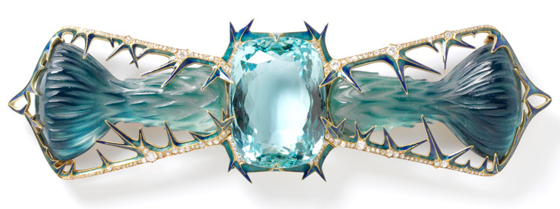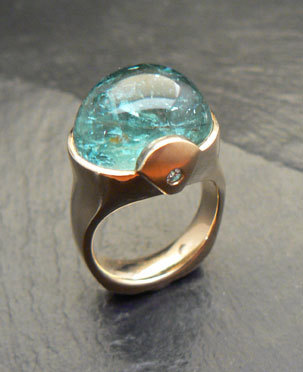
Aquamarine has always symbolized renewal, eternal youth and happiness, so it’s a fitting birthstone for those born in the month when winter gives way to spring.
Derived from the Latin for “water” and “sea,” aquamarines were the talisman of choice for sailors who believed a stone engraved with Poseidon would keep them safe at sea.
It’s not hard to guess how this myth began. This stone so perfectly embodies the sea, you can almost hear the waves and smell the salt air when you look at it.
Like water itself, aquamarine ranges in color from the Caribbean blue cabochon Karen Bandy used for this ring (right) to the steely, icey blue of Klaus Spies’ rings (below) and the murky, opaque greener version Brigit Kupke Peyla uses in her mixed-metal bracelets and brooches.
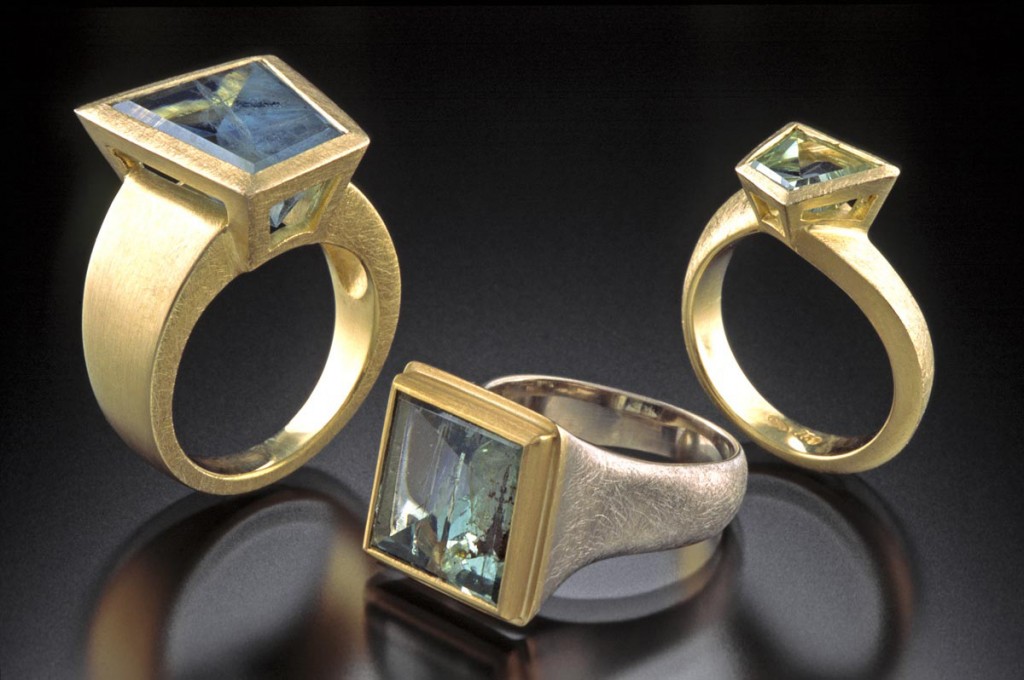
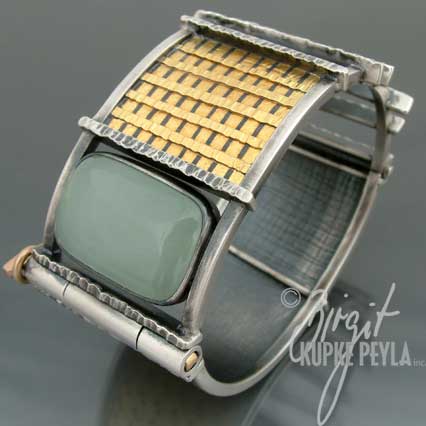 Mineralogically, aquamarine is a close cousin of the emerald, another gemstone in the beryl family but more durable and further to the blue end of the spectrum.
Mineralogically, aquamarine is a close cousin of the emerald, another gemstone in the beryl family but more durable and further to the blue end of the spectrum.
Most fine aquamarine comes from Brazil, known for a sapphire-blue variety. Siberia and the Ural Mountains of the former Soviet Union produce aquamarine of the more familiar greenish-blue. Known for a long time as an inexpensive alternative, fine aquamarine is rising in price as it becomes scarcer and the very best is now quite expensive.
Aquamarine was one of the stones nature-obsessed Art nouveau designers like René Lalique used when they wanted to invoke water, springtime and renewal, as in the brooch below. (Opal was another.) Aquamarine became popular again four decades later, for far more practical reasons.
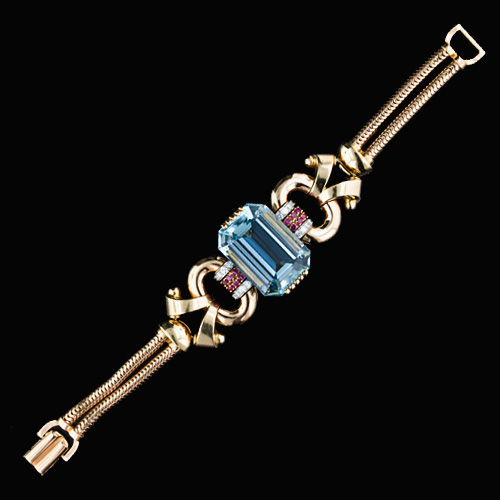
During World War II, precious gems were hard to come by and newly (if temporarily) independent working women wanted bigger, bolder jewelry to express their newfound confidence. Citrine and aquamarine were affordable, available and looked just right in the oversized cuts the cocktail look required – chunky rings and bulging cabochon center-stones in cuff bracelets, both of which Marlene Dietrich and Joan Crawford made famous. Semiprecious stones also worked well with the new look of mixed colors – all styles we’re seeing revived today.
To find the jewelry pictured here, visit the Karen Bandy Studio, Spies Jewelry Design, Birgit Kepke-Peyla, and Lang Antiques.

